The homes in the United States are among the largest in the world, as the size of an average house on the national level is around 2.000sq/ft. Even so, the best 5-ton heat pumps might be too powerful for a median single-family home since their output is better suited for spaces that have close to 3.000sq/ft.
The heat pump’s coverage area is a tricky metric because it depends on the climate, the house’s thermal insulation, and its layout. Hence, the selection process is more complicated than comparing the pump’s BTUs to the size of your home.
Although they’re designed primarily as cooling systems, heat pumps can also be used for heating, but their low-temperature performance depends on the setup you choose.
So, in this guide to the best 5-ton heat pumps, we’re going to supply you with the information you need to get a model that can cool or heat your home efficiently. Read our guide to the best 2-ton heat pumps, if you’re looking for a unit with moderate output capacities.
At a Glance: The 5 Best 5-Ton Heat Pumps
| Model | SEER | Noise Level | Price Range |
| Rheem Presitge RP20 EcoNet | 20 SEER | 58dB to 73dB | $$$$ |
| Lennox XP25 Dave Lennox Signature Collection | 23.5 SEER | 58dB | $$$$ – $$$$$ |
| Carrier Infinity® 25VNA0 | 20.5 | 58dB | $$$ |
| Goodman GSZ14 | 15 | 72dB to 76dB | $$$ – $$$$ |
| Bryant Evolution™ 288BNV | 19 | 55dB | $$$$ |
The coverage area of 5-ton heat pumps
Perhaps the most important thing you’ll have to do while searching for a heat pump is to determine if its output matches your needs. The term ton refers to the amount of heat required to melt a ton of ice in a day, and a ton equals 12.000 British Thermal Units (BTUs).
Manufacturers usually let you choose the model’s output capacity, and you can decide if you want to get a 2-ton (24.000BTUs) or 5-ton (60.000BTUs) version of a particular heat pump.
This enables you to pick the output that is suitable for the size of the space you want to cool or heat since a 5-ton heat pump can control the temperature in structures larger than 3.000sq/ft, while 2-ton models can’t cover areas larger than 1.400sq/ft.
However, you should bear in mind that the coverage area of these systems isn’t fixed, as they can cover 200 to 400sq/ft more in cold climates than in warm climates. Go through our guide to 4-ton heat pumps to learn more about the output capacities of these units.
Choosing between single-stage and variable speed compressors
The refrigerant can’t move through the heat pump system or transition from low pressure and temperature states to high pressure and temperature states without a compressor.
Even though there are several types of compressors, the majority of modern heat pump setups are equipped with a scroll compressor.
- Scroll compressors – These compressors feature a center coil or a scroll that rotates with a second coil and create the compression required for the uninterrupted flow of the refrigerant through the pump.
Besides scroll compressors, you may also run into heat pump models that utilize rotary, screw, or reciprocating compressors. Each type has different properties, and they utilize different methods to circulate the refrigerant throughout the system.
They also operate at different speeds, so you should differentiate between:
- Single-stage compressors – Heat pumps equipped with these compressors always operate at their maximum capacity, and you can’t adjust their output to your current needs. They’re often paired with single-speed fans that rotate at a constant speed.
- Dual–stage and variable compressors – Both types allow the user to adjust the output to the room conditions. The only difference is the level of precision these compressors offer, so if you need a model that allows for precise adjustments, you should opt for a variable speed compressor. Heat pumps equipped with either of these compressors come with fans that can operate at more than one speed.
Power saving properties of heat pumps
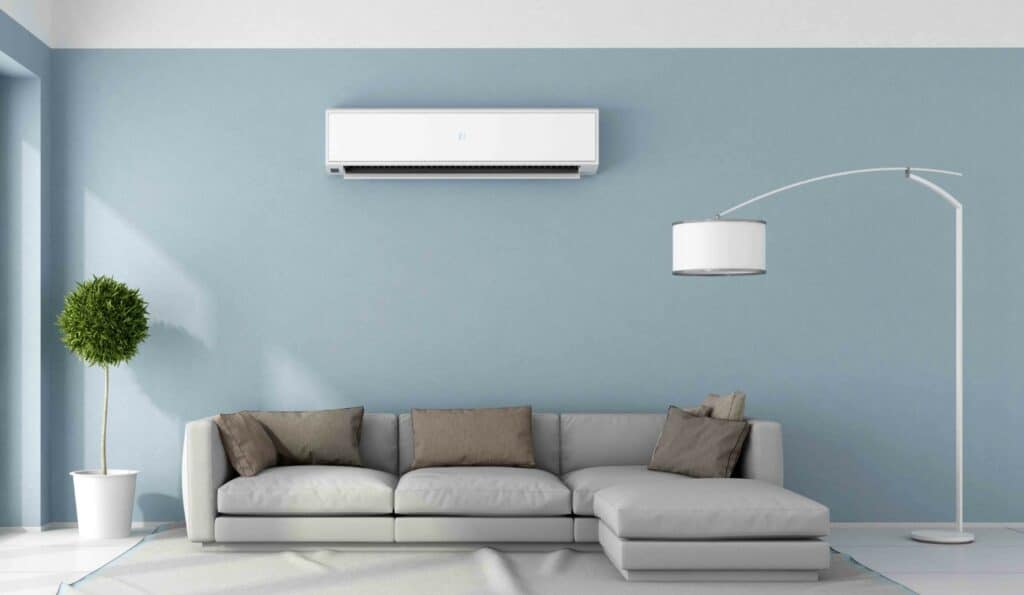
Lowering the monthly utility costs is one of the main reasons why homeowners prefer heat pumps to mini splits and similar cooling or heating systems. The most energy-efficient models are also Energy Star certified, and they use approximately 5% less power than models that don’t have this certificate.
You need to pay attention to three efficiency ratings, so let’s take a closer look at them.
- Seasonal Energy Efficiency Ratio (SEER) – Most heat pump models have their SEER ratings incorporated into their names. This ratio is calculated by dividing the unit’s annual BTU output by the amount of electricity it consumes during the same period.
- Energy Efficiency Ratio (EER) – Usually bundled with SEER, the EER shows the unit’s cooling efficiency per hour. It is calculated in the same way as SEER, but the BTU output and power consumption are measured on an hourly basis.
- Heating Seasonal Performance Factor (HSPF) – As its name indicates, this rating measures the heating efficiency of air-source heat pumps. You can calculate the HSPF by dividing the unit’s heat output during the heating season and the amount of watt/hours the unit used throughout that period.
Cooling and heating methods
A heat pump can rely on air, water, or geothermal energy to supply cooling or heating. Air-based systems are the easiest to install, which is the reason why they’re the most popular option.
Other systems are more complex, and they’re difficult to install in structures that are already completed because they contain pipe systems that have to be located below the ground level.
Water-source systems require access to a large body of water such as lakes, rivers, or ponds as they utilize their thermal properties for heating or cooling.
Each of these systems contains different components, so you must find out more about how a particular system works before you decide to install it in your home. Also, the cost of water and geothermal heat pumps is significantly higher than the cost of an air-source unit.
Go through our guide to humidity control systems if you’re concerned that a heat pump might dehumidify the air in your home.
Noise cancellation features
As all appliances equipped with a motor, heat pumps generate a certain amount of noise. Most units don’t generate enough noise to disturb your neighbors, as they usually produce less than 80dB of noise.
Despite this, you should still look for a model that has an acoustically designed cabinet, as well as an insulation blanket that muffles the sounds the heat pump produces.
The unit’s noise level is usually included in the specifications, but it can sometimes be confusing because it is unclear at which distance the noise was measured.
Well-insulated models produce between 50dB and 60dB of noise, while heat pumps without sound insulation can generate up to 100dB if you’re standing within a few feet from them.
Factors worth considering while choosing a 5-ton heat pump
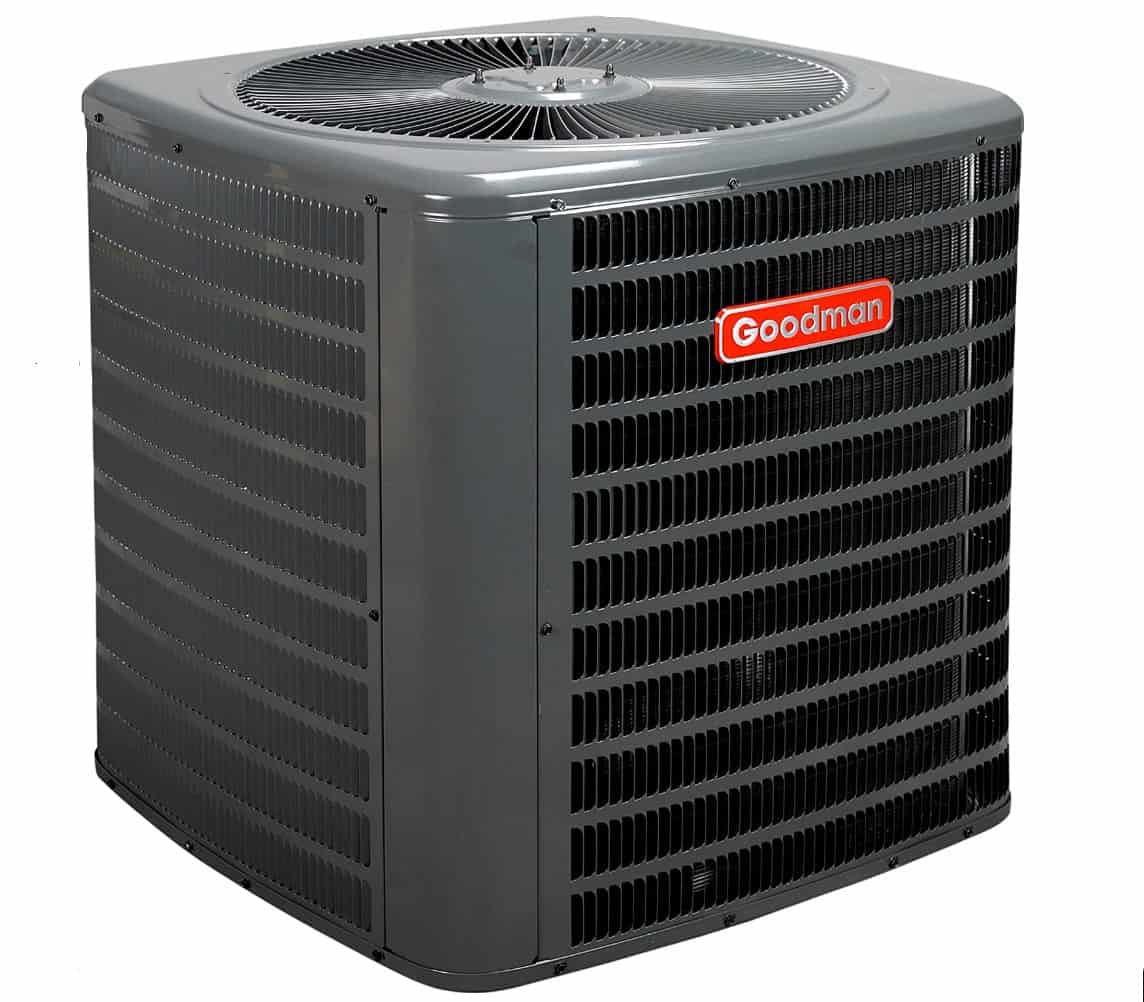
Large spaces are difficult to heat or cool, and you must spend a lot of electricity just to keep the room temperature at the same level. A 5-ton heat pump enables you to regulate the temperatures in structures that are larger than 3,000sq/ft at a relatively affordable price.
Estimating the right heat pump size is trickier than it seems, and you should consult with a professional installer while trying to figure out if a 5-ton unit is a right choice for your home. Let’s take a look at some of the factors that can help you determine if a 60.000 BTU heat pump is the right choice for you.
This bundle begins with a basic heat pump from the GSZ14 series. Starting off at a base efficiency of 14 SEER, these models provide both heating and cooling, with basic efficiency.
The size and layout of your home
Besides the actual size of the area in which you want to regulate the temperature, you should also factor in its layout. So, for instance, cooling or heating a 3.000sq/ft space is much easier if it doesn’t have multiple stories.
Also, the wall insulation, the number and location of doors and windows, or the climate can all affect the unit’s coverage area. Learning more about the Manual J and Manual S procedures can assist you in calculating the heat pump size accurately.
Low-temperature performance and Defrost mode
Air to air heat pumps can be used for heating as long as the outside temperatures remain above 40F. However, once the air outside gets too cold, the unit loses its capacity to heat large spaces, and the easiest way to overcome this issue is to connect it to a gas furnace.
Creating the hybrid system is only possible if the model is compatible with furnaces that are usually sold separately from heat pumps. The Defrost mode is another feature you need to pay attention because it protects the coil in the unit’s outdoor component from freezing.
The complexity of the installation process
While deciding which heat pump to choose, you should also consider how difficult it would be to install a unit in your home. Air-source heat pumps are the easiest and the cheapest to install, as other systems are more complex.
Even so, you still have to get in touch with a contractor to get a quote, so besides the cost of the equipment, you should add the installation costs to the budget for your new heating and cooling system.
Power efficiency
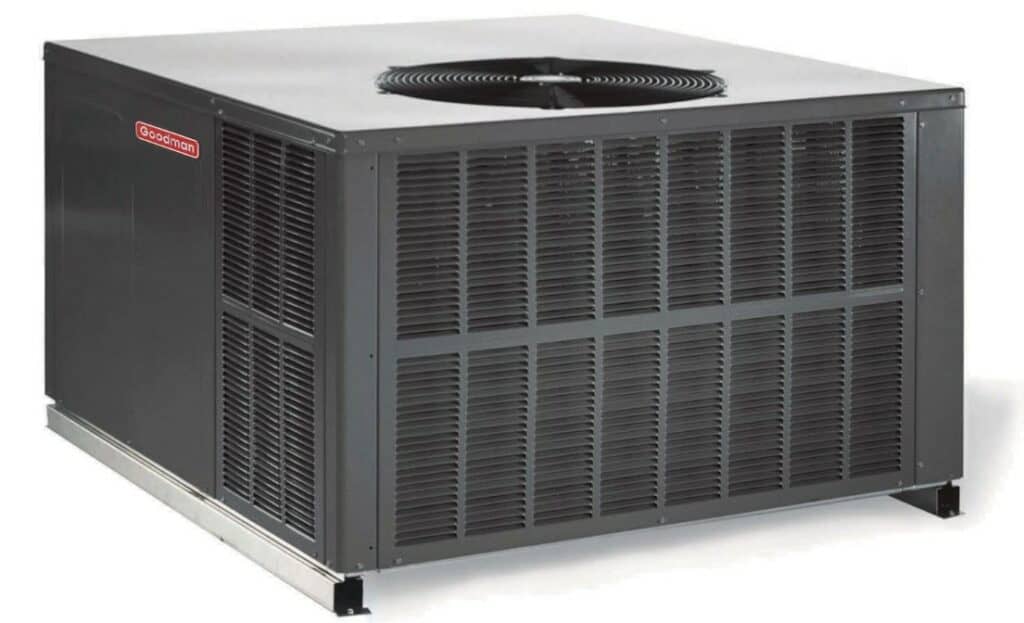
The unit’s SEER, EER, and HSPF ratings indicate its maximum energy efficiency. Still, inadequate installation and numerous other factors can cause the heat pump to consume more energy than the manufacturer suggested.
That’s why it is hard to estimate if a heat pump will actually lower your monthly utility bills and by how much, especially if you want to regulate the temperature in a 3.000sq/ft space.
Warranty and durability
Whether or not the 5-ton heat pump’s components are going to break down frequently depends on the model. Some brands offer a 10-year warranty for both the parts and the cabinet, so in case any component of the system breaks down, you’ll be able to replace it for free.
In most cases, you can use these units for more than ten years without having to go through major repairs. Some units enable the contractor to monitor their performance remotely so that you don’t have to worry about their maintenance.
The advantages of 5-ton heat pumps
Allow users to regulate the temperature in large spaces
Finding an energy-efficient heating or cooling solution capable of regulating the temperature in a 3.000sq/ft area isn’t easy. A 5-ton air-source heat pump can lower your home’s power consumption while keeping the room temperature at a constant level.
Adjustable power outputs
Opting for a unit equipped with a variable speed compressor will grant you control over its output levels. Consequently, you’ll be able to use just 30% or 50% of the heat pump’s capacity and adjust its output to the current weather conditions.
Controlling a 5-ton heat pump is easy.
Most industry-leading brands manufacture models that come with a touch-screen control panel that lets you set a default temperature or program how long the unit should be working. In case the control panel is Wi-Fi-enabled, you can control it from a smart device.
The disadvantages of 5-ton heat pumps
High installation costs
The heat pump installation process is too complex even for skilled and experienced DIYers, so your only option is to hire a professional contractor to install the system for you.
You should expect to spend the same amount or slightly less than what you spent on the equipment to have a 5-ton heat pump installed in your home.
Top five 5-ton heat pumps
Rheem Prestige RP20 EcoNet – The best variable speed 5-ton heat pump
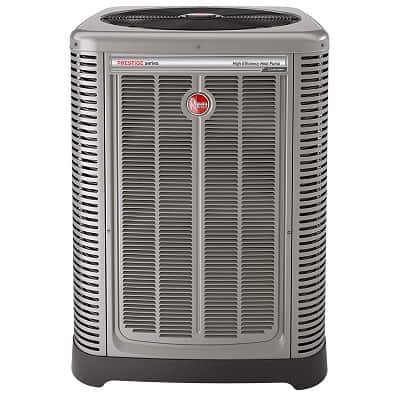
The Copeland scroll variable speed compressor the Rheem Prestige RP20 EcoNet utilizes lets you control the room temperature with utmost precision. It also helps reduce the humidity levels in your home, and it prevents the formation of mold in bathrooms and kitchens.
Furthermore, the EcoNet Smart Home System can heat the water, so you can use this heat pump to replace the water heater. You’ll receive a 10-year warranty that covers the cabinets and all of the system’s components if you opt for this Rheem’s model.
Pros
- Excellent sound insulation
- Great performance in low-temperature conditions
- Tube design reduces refrigerant leaks
- Modernly designed heat pump cabinet
Cons
- No dual fuel capacity
- More expensive than similar models
Read also: Rheem vs Ruud Brand Comparison.
Lennox XP25 Dave Lennox Signature Collection – The most energy-efficient 5-ton heat pump
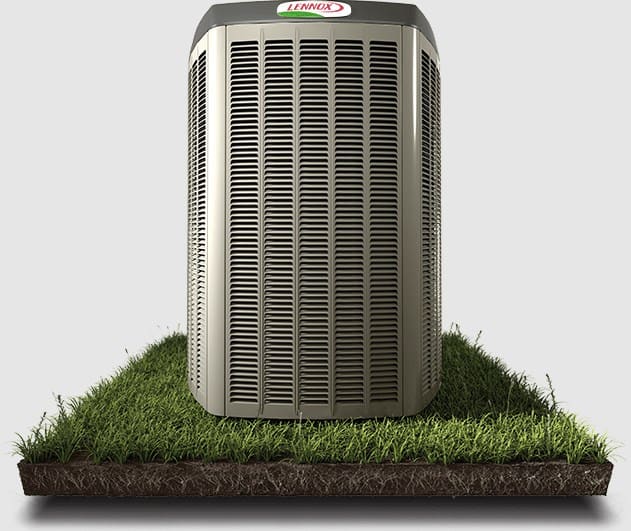
You should take a closer look at the Lennox XP25 Dave Lennox Signature Collection heat pump if you’re looking for a way to make your home more energy-efficient. With 23.5 SEER and 10.20 HSPF ratings, this 5-ton unit can cut your monthly power consumption in half and save you hundreds of dollars every year.
Its PermaGuard® cabinet has the SmartHinge™ louver design that ensures the free flow of cool and hot air. Besides the utility grid, you can also connect this heat pump to your home’s solar panel system to lower your heating and cooling expenses.
Pros
- Energy Star certified
- The SilentComfort technology reduces the unit’s noise levels
- Features a built-in diagnostics system
- Intricate temperature adjustments
Cons
- High installation costs
- Some components are not very durable
Carrier Infinity® 25VNA0 – The most affordable 5-ton heat pump

Besides an impressive 20.5 SEER rating, the Carrier Infinty® 25VNA0 has equally remarkable EER 16 and HSPF 13 ratings. The initial cost of this system is significantly lower than what you’d expect from a heat pump that can perform at such a high level.
Its variable-speed compressor lets you control the unit’s output and adjust it to the current weather conditions. This Carrier’s model has the Silencer System II design as well as a compressor sound blanket that ensures it produces a minimal amount of noise.
Pros
- Simple output adjustments
- High level of energy efficiency
- Suitable for hybrid systems
- Huge coverage range
Cons
- Limited warranty registration period
- Some parts of the outdoor unit are prone to corrosion
Goodman GSZ14 – The best single-stage 5-ton heat pump
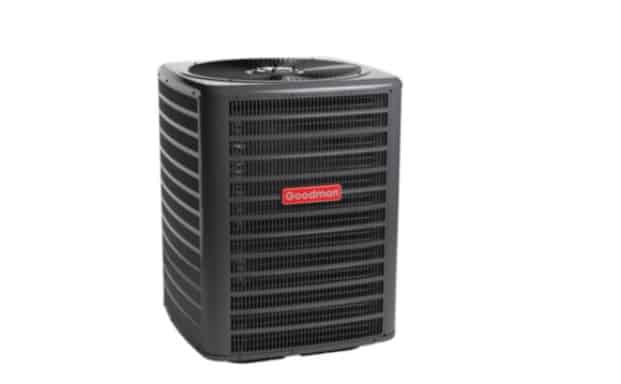
When compared to heat pump models produced by competing brands, the Goodman GSZ14 doesn’t seem like it has much to offer. However, it is still one of the best single-stage Energy Star certified heat pumps on the market.
Its cabinet is acoustically designed to muffle the noises generated by the single-speed PSC fan motor and the compressor. The GSZ14 is equipped with SmartShift® technology that reduces the frequency of the defrost cycle.
The manufacturer offers a limited 2-year unit replacement warranty and a 10-year limited warranty for all components of the system.
Pros
- Utilizes a scroll compressor
- Eco-friendly refrigerant
- Automatic defrost cycle control
- Powerful condenser fan motor
Cons
- Non-adjustable output
- Poor performance in low-temperature conditions
This bundle begins with a basic heat pump from the GSZ14 series. Starting off at a base efficiency of 14 SEER, these models provide both heating and cooling, with basic efficiency.
Bryant Evolution™ 288BNV – The 5-ton heat pump with the lowest noise level
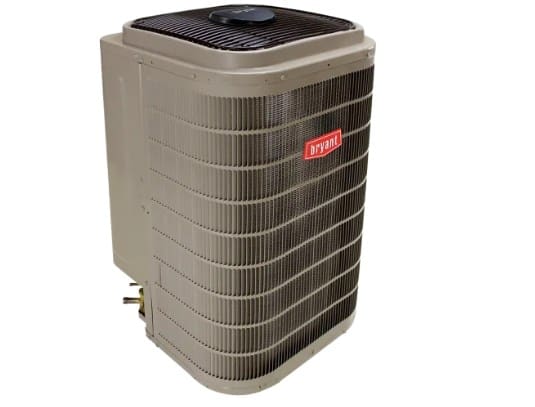
The Hybrid Heat® system compatibility enables you to pair the Bryant Evolution™ 288BNV heat pump with a gas furnace and use it throughout the year. This model doesn’t meet the Energy Star standards in all sizes, so you have to check the energy efficiency of the heat pump’s 5-ton version.
Bryant’s model can function at 5 different speed stages, which enables you to utilize low stage cycles to reduce energy consumption. The Evolution Connex feature lets you control the air humidity in your home and preserve energy at the same time.
Pros
- Low noise levels
- Hybrid system compatibility
- Sturdy metal cabinet construction
- Controlling the air humidity is easy
Cons
- Energy efficiency depends on the unit’s size
- Heavy and bulky system components
Frequently Asked Questions
Question: Are 5-ton heat pumps prone to refrigerant leaks?
Answer: Yes, they are. In fact, a refrigerant leak is one of the most common issues you’ll encounter with these cooling and heating systems.
Question: Do I need a 5-ton heat pump with a variable speed compressor?
Answer: Having the ability to control the unit’s output will make it easier to get the room temperature you want.
Question: Are gas furnaces for 5-ton heat pumps expensive?
Answer: Yes, they are, as in most cases, you have to spend thousands of dollars to create a hybrid system.
Question: How often do I have to replace the components of a 5-ton heat pump?
Answer: The durability of individual parts depends on the heat pump brand, model, and how often you use the unit. With regular upkeep, the components of these systems remain in perfect condition for years.
Our verdict: Deciding which 5-ton heat pump to get
The heat pump’s tonnage determines its coverage area, so 2-ton or 3-ton versions of these systems are better suited for spaces smaller than 2,000sq/ft, while 4-ton and 5-ton units are used for spaces larger than 2,000sq/ft.
You shouldn’t get a 5-ton heat pump if its size doesn’t match the size of your home because it will switch off and on in short intervals and consume a lot of energy.
We recommend the Rheem Prestige RP20 EcoNet or the Lennox XP25 Dave Lennox Signature Collection heat pump if you’re looking for a way to cool or heat structures larger than 3,000sq/ft.
Optionally, you can get a more affordable single-stage heat pump like the Goodman GSZ14 if you don’t want to overspend on your home’s cooling system. Was this guide to the best 5-ton heat pumps useful?
This bundle begins with a basic heat pump from the GSZ14 series. Starting off at a base efficiency of 14 SEER, these models provide both heating and cooling, with basic efficiency.
Let us know in the comments or continue reading our guides to find a model suitable for your needs:
- R13 vs R15 Insulation Compared: What’s the Difference? - December 9, 2023
- Ruud vs Trane HVAC Systems Compared - December 9, 2023
- Senville Mini Split Review and Guide: Is It Worth Buying? - December 9, 2023


